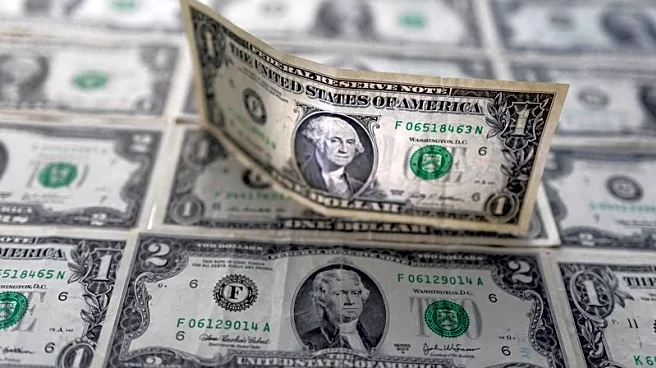What's Happening?
The dollar index reached a three-month high, trading at 99.89, as the Federal Reserve signaled a cautious approach to further interest rate cuts. The Fed recently lowered rates by 25 basis points, but Chair Jerome Powell indicated this might be the last
cut for the year, citing the need for a clearer economic picture. The ongoing U.S. government shutdown has delayed key economic data releases, leaving investors reliant on less comprehensive indicators like ADP employment data and ISM PMIs. The yen and euro have weakened against the dollar, with the yen nearing intervention levels seen in previous years.
Why It's Important?
The dollar's strength impacts global trade and investment, affecting U.S. exports and multinational companies. A strong dollar can make U.S. goods more expensive abroad, potentially reducing demand. The Fed's cautious stance reflects concerns about economic stability, influencing market expectations and investment strategies. The yen's weakness could prompt Japanese intervention, affecting currency markets and international trade dynamics. The situation underscores the interconnectedness of global economies and the influence of U.S. monetary policy on international financial systems.
What's Next?
Investors will closely monitor upcoming economic data and Fed communications for indications of future policy moves. The potential for Japanese intervention in currency markets could create volatility, impacting global trade and investment flows. The Fed's decisions will continue to shape market expectations, influencing interest rates and investment strategies. Stakeholders, including businesses and policymakers, will need to adapt to these developments, balancing domestic economic goals with international trade considerations.













